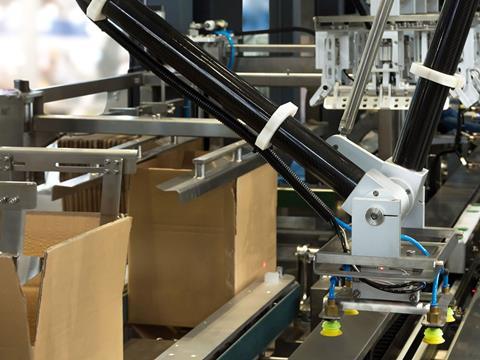
In our latest Innovation Spotlight, Rockwell Automation discusses how companies can deliver incremental digital value to customers with OEMs.
Waiting to react to customer specifications is a lose-lose proposition. A better way? Deliver incremental digital value – and boost your own bottom line.
During the past decade, we’ve all witnessed an incredible shift in the relationship between manufacturers and their OEMs. Once massive corporate engineering departments have significantly downsized. And companies across all industries now rely heavily on their machine builders to drive innovation and efficiency on their plant floors.
Indeed, today’s end users expect more from their OEMs. But how do you respond?
Smart devices and digital technology provide an almost limitless way for machine builders to differentiate their offerings and drive value on the plant floor. But despite the promise of smarter machines, many OEMs encounter roadblocks when they explore solutions with their customers. Maybe this is your scenario. You would like to add more smart technology to your equipment, but your customers aren’t asking for it. And how do you justify the capital investment when demand is ambiguous?
Step-up to smart outcome-based selling
Smart technology provides you with an opportunity to deliver incremental value to your customers – and continuous productivity back to your company’s bottom line.
But to be successful, you must start thinking more about the outcomes your customers want to achieve – and less about the mechanical capabilities of your equipment.
How? Here are two critical questions that will help you reevaluate your process – and put you on the path to more productive conversations with your customers.
Do you speak your customers’ language?
Your customers are probably asking for smarter technology. But you might not be speaking their language.The truth is customers don’t always know exactly what capabilities they need or want in a machine or piece of equipment. That’s why selling smart technology can be so difficult.
But customers certainly know what they don’t like. And often, their desired business outcomes are hidden in a simple equipment objection, like saying your machine is too hard to operate. Probe deeper, and their business outcome actually is “I have to maintain productivity despite high operator turnover in my plant.”
As an OEM, you can translate that outcome to a value you can deliver: “Using smart technology, I can provide a machine that anyone can operate.” In short, learn your customer’s language, uncover the outcomes – and position smart technology to achieve them.
Are you still selling “speeds and feeds”?
Understanding how new smart technology can be brought to bear to improve customer outcomes is critical. But so is changing your mindset about how to promote your existing portfolio.
For many machine builders, most selling still focuses on metrics highlighting the mechanical capabilities of the equipment, the “feeds and speeds.” That’s a missed opportunity.
Smart capabilities tied directly to key customer outcomes – like simpler maintenance – are enabled by a contemporary control system. And evolving smart technologies – like artificial intelligence (AI), augmented reality (AR) and digital twin – are intrinsically tied to it.
To create more customer value, find ways to make digital capabilities a larger part of the conversation. And turn to your automation supplier for help with training your team or extending smart technology to deliver incremental value in new ways.
Driving continuous productivity to your bottom line
Tight profit margins and limited capital are just a reality for most OEMs. That’s why choosing where and how to invest in new smart technology is so critical.
Fortunately, when it comes to smart technology there are many opportunities to create a win-win scenario for both your customers and your company. But identifying the right path will require a bit of soul-searching on your part.
The key question to ask yourself? What steps can I take right now that will deliver a differentiated experience for my customers – and improve my cash flow or create additional revenue streams?
The COVID-19 pandemic accelerated this self-discovery process for some machine builders. For instance, one OEM was spending tens of thousands of dollars annually making warranty service calls. When the pandemic restricted on-site visits, they invested in an augmented reality platform that enabled them to collaborate with customers and solve their issues off-site, in real time.
As a result, this same machine builder is now investigating ways to use AR to create a permanent service offering – and new revenue stream – which will also self-fund future digital investments.
Are you in it to win it?
For every OEM, the path to smarter machines will be as unique as their value proposition and image they project to their customers. But the digital evolution is here. And no OEM can afford to be the last adopter.

As an OEM, how do you keep up with marketplace challenges? This eBook from Rockwell Automation explains that the answer is: with information-enabled, smart machines and equipment that use advanced technology — and are built on a foundation that securely and safely connects to the production environment and beyond.
This content was sponsored by Rockwell Automation.










